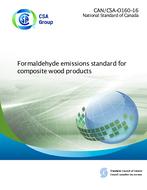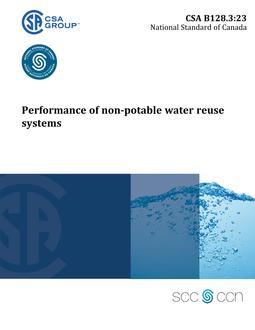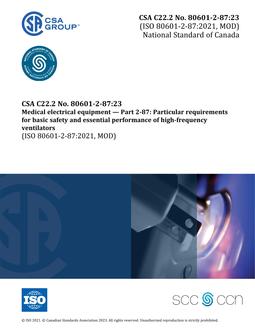
CSA O160-16
Preface
This is the first edition of CAN/CSA-O160, Formaldehyde emissions standard for composite wood products. Note: For more information on VOCs, refer to Annex B. This Standard is intended to harmonize with the existing California Air Resources Board’s Airborne Toxic Control Measures (ATCM) 17 CCR (§93120 et seq. on all sections relating to responsibilities of manufacturers and third party certifiers). Note: California Air Resources Board’s Airborne Toxic Control Measures (ATCM) 17 CCR is referred to as CARB throughout this Standard. CSA Group acknowledges that the development of this Standard was made possible, in part, by the financial support of Standards Council of Canada, with support from Health Canada. Health Canada provides health-based science and policy advice that supports actions to improve air quality and health of Canadians, in part through the development of health-based residential product emissions Standards.
Introduction
The purpose of this Standard is to limit formaldehyde emissions from composite wood panels offered for sale for use in Canada. This Standard specifies the requirements for product sample collection, emissions testing, marking, and labeling, and sets maximum emission limits. Contributions to indoor air were based on representative use patterns. The Technical Committee evaluated product emissions chamber data and Canadian housing characteristics and developed product emissions levels for individual composite wood panels that fall under the purview of this voluntary standard. The product emission levels in this standard are health- based, and are intended to meet Health Canada’s Residential Indoor Air Quality Guideline for formaldehyde. Reductions in formaldehyde levels such as those from barriers and off-gassing time from manufacture to installation were also taken into account. In each case, the product emission levels were found to be compatible with the CARB Phase 2 limits, and as a result it was possible to harmonize this CSA standard with the key requirements of CARB Phase 2. As industry is already demonstrating compliance with CARB Phase 2, it is anticipated that this will greatly aid in the use of this voluntary standard by industry in the most effective and efficient manner possible. (Refer to Annex A for further details). This Standard will allow users to either comply with the standard labelling “Complies with CAN/CSA-O160” or participate in a certification program that would allow labelling as “Certified to CAN/CSA O160”. Certification to the Standard is demonstrated by a) conducting product emissions testing in accordance with ASTM E1333 or ASTM D6007, for which equivalence has been established; and b) complying with all sections of the California Air Resources Board Airborne Toxic Control Measure (ATCM) 93120 relating to responsibilities of the manufacturer and third party certifier, other than filings with and approval by CARB. To be certified under this Standard, there would need to be compliance with the emission limits specified in Table 2 as verified by an accredited third party certification/inspection body in accordance with the procedures and requirements in the CARB ATCM 93120. It is also good practice to adhere to the general requirements of product conformity as per ISO/IEC 17050-1. Note: In Canada, third party certification bodies are accredited by the Standards Council of Canada (SCC). Compliance with this Standard is demonstrated by conducting product emissions testing in accordance with ASTM E1333 or ASTM D6007 for which equivalence has been established.
Scope
1.1 This Standard applies to newly manufactured, unfinished composite wood panels prior to use in construction, finishing, or installation. The composite wood panel categories covered are a) hardwood plywood (HWPW) (including composite and veneer core); b) particleboard (PB); c) medium density fibreboard (MDF); and d) thin MDF. Note: Refer to Clause 3.1 for further clarification. 1.2 This Standard does not apply to the following: a) cellulosic fiber insulating boards complying with ASTM C208; b) curved plywood; c) hardwood plywood with a lumber core or non-composite core material; d) finger-jointed lumber; and e) structural wood products made with moisture resistant adhesives complying with the referenced standards:
- i) structural Plywood conforming to CSA O121, CSA O151, CSA O153, or NIST PS 1; ii) oriented strand board (OSB) specified with the Exposure 1 or Exterior bond classification in accordance with CSA O325, NIST PS 2, ICC Acceptance Criteria or Canadian Codes and Materials Centre (CCMC) Evaluation Criteria or ANSI standards for code compliant applications; iii) structural Composite Lumber, Specification for Structural Composite Lumber Products conforming to ASTM D5456 or CCMC Evaluation Criteria for Structural Composite Lumber; iv) structural Glued Laminated Timber conforming to CAN/CSA-O122 or ANSI A190.1; v) wood I-Joists “Standard Specification for Establishing and Monitoring Structural Capacities of Prefabricated Wood I-Joists” conforming to ASTM D5055 or CCMC Evaluation Criteria for Wood I-joists; and vi) cross-laminated timber specified to ANSI/APA PRG 320.
1.3 In this Standard, “shall” is used to express a requirement, i.e., a provision that the user is obliged to satisfy in order to comply with the Standard; “should” is used to express a recommendation or that which is advised but not required; and “may” is used to express an option or that which is permissible within the limits of the Standard. Notes accompanying clauses do not include requirements or alternative requirements; the purpose of a note accompanying a clause is to separate from the text explanatory or informative material. Notes to tables and figures are considered part of the table or figure and may be written as requirements. Annexes are designated normative (mandatory) or informative (non-mandatory) to define their application.
Product Details
- Edition:
- 1st
- Published:
- 05/01/2016
- ISBN(s):
- 9781488303050
- Number of Pages:
- 25
- File Size:
- 1 file , 1.4 MB
- Product Code(s):
- 2424353, 2424353, 2424353


